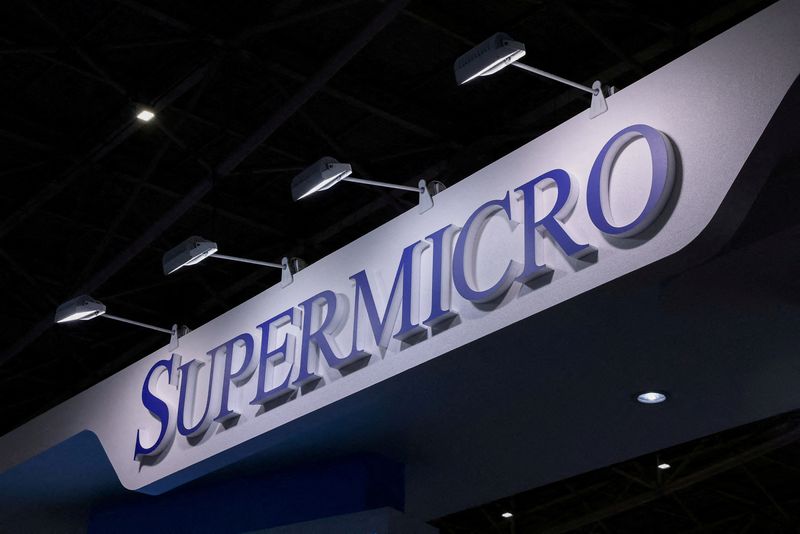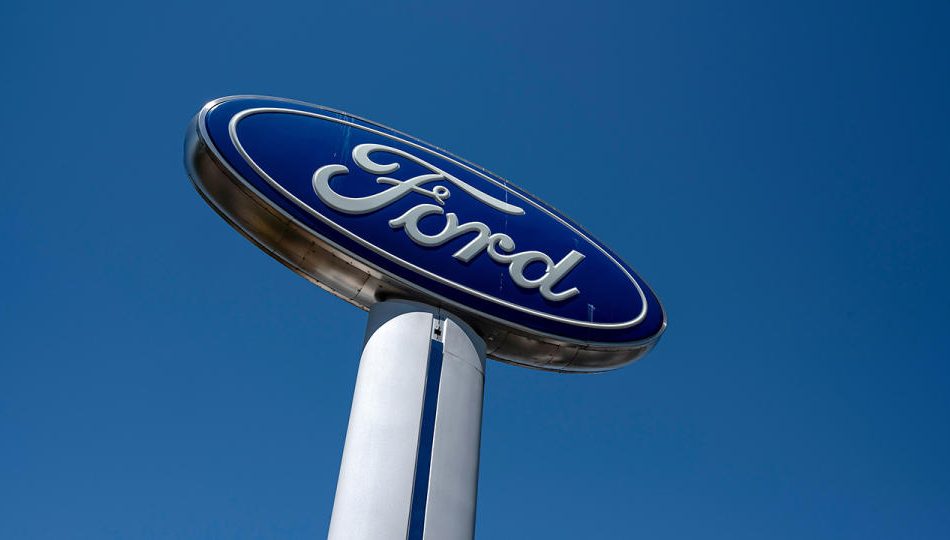2 Magnificent Stock-Split Stocks to Buy Hand Over Fist in September, and 2 That Are Priced for Perfection and Worth Avoiding
Move over, artificial intelligence (AI)! Wall Street has a new hot trend, and its name is stock-split euphoria.
A stock split allows publicly traded companies the ability to adjust their share price and outstanding share count by the same magnitude. However, these changes are purely superficial and don’t impact a company’s market cap or its operating performance.
Since 2024 began, 13 outstanding companies have announced and/or completed a stock split, including (all are forward-stock splits, unless otherwise noted):
-
Walmart (NYSE: WMT): 3-for-1 stock split
-
Nvidia (NASDAQ: NVDA): 10-for-1
-
Amphenol (NYSE: APH): 2-for-1
-
Chipotle Mexican Grill (NYSE: CMG): 50-for-1
-
Mitsui (OTC: MITSY)(OTC: MITSF): 2-for-1
-
Williams-Sonoma (NYSE: WSM): 2-for-1
-
Broadcom (NASDAQ: AVGO): 10-for-1
-
MicroStrategy (NASDAQ: MSTR): 10-for-1
-
Sirius XM Holdings (NASDAQ: SIRI): 1-for-10 reverse split
-
Cintas (NASDAQ: CTAS): 4-for-1
-
Super Micro Computer (NASDAQ: SMCI): 10-for-1
-
Lam Research (NASDAQ: LRCX): 10-for-1
-
Sony Group (NYSE: SONY): 5-for-1
Among these top-notch stock-split stocks are two magnificent, inexpensive companies that are begging to be bought in September, as well as two highfliers that are priced for perfection and worth avoiding.
Stock-split stock No. 1 that can be bought hand over fist in September: Sirius XM Holdings
The first phenomenal stock-split stock you can scoop up with confidence in September is the only company of the 13 listed above that’s set to conduct a reverse-stock split: satellite-radio operator Sirius XM Holdings.
Whereas most companies completing reverse splits are doing so from a position of operating weakness, this isn’t the case with Sirius XM. Its roughly 3.85 billion outstanding shares have held its stock in the mid-single-digits for a decade, which might be a deterrent for some institutional investors who deem its low share price too risky. This reverse split will take place following the merger of Sirius XM with Liberty Media’s Sirius XM tracking stock, Liberty Sirius XM Group in a little over week, and likely make shares more attractive to big-money investors.
What investors get with Sirius XM is easily identifiable competitive advantages. For example, it’s the only licensed satellite-radio operator in the country, which affords it substantial subscription pricing power.
Sirius XM also generates its revenue differently than terrestrial and online radio providers. Instead of relying almost exclusively on advertising, as traditional radio companies do, Sirius XM has generated 77% of its net sales from subscriptions through the first-half of 2024. People are much less likely to cancel their service during periods of economic turbulence than businesses are to pare back to marketing budgets at the first sign(s) of trouble. In other words, Sirius XM is better positioned to navigate uncertain economic climates.
A forward price-to-earnings (P/E) ratio of less than 10, coupled with a dividend yield of 3.4%, makes Sirius XM stock quite the bargain for opportunistic long-term investors.
Stock-split stock No. 2 to purchase with confidence in September: Sony Group
The other magnificent stock-split stock that’s begging to be bought in September is none other than Japan-based electronics goliath Sony Group. Sony’s American Depositary Receipts (ADRs) are set to undergo a 5-for-1 split on Oct. 8.
Even though we’re coming up on four years since Sony introduced the PlayStation 5, and it’s perfectly normal to see gaming console sales taper off late in the cycle, Sony has found a couple of ways to boost one of its top revenue channels.
For instance, it’s increasing the price of PlayStation 5 by about 19% in Japan to counter challenging economic conditions. It’s also seeing strong subscription sales growth from PlayStation Plus, which allows subscribers to play games with their friends and store gaming data in the cloud.
Though it’s best-known for gaming, Sony Group is a diverse company. It’s one of the primary suppliers of image sensors used in smartphones. With telecom companies upgrading their wireless networks to support faster download speeds, consumers and businesses have been steadily trading in their old devices for new ones that are 5G-capable. The 5G revolution is providing a healthy boost to Sony’s Imaging and Sensing Solutions segment.
A forward P/E of 16 is a fair (if not inexpensive) price to pay for a wonderful company that’ll likely be introducing a new gaming console in about two years’ time.
The first stock-split stock to avoid in September: Nvidia
However, not every stock-split stock is worth buying. Even though Nvidia has been the hottest megacap stock on the planet since the start of 2023, and its H100 graphics processing unit (GPU) is the preferred choice in AI-accelerated data centers, there are too many potential red flags to ignore.
A point I’ve been trying to drive home for months is that there hasn’t been a next-big-thing innovation, technology, or trend that’s escaped an early stage bubble-bursting event in 30 years. This is a nice way of saying that investors always overestimate how quickly new innovations/technologies are adopted by consumers and businesses.
The simple fact that most businesses lack a defined game plan for their AI data center investments strongly suggests that we’re witnessing the next in a long line of bubbles with AI. If and when the AI bubble bursts, I’d expect Nvidia’s stock to be clobbered.
Competitive pressures can also no longer be ignored. Advanced Micro Devices is ramping up production of its MI300X AI-GPU, which is substantially cheaper than the H100, and doesn’t face the same supply chain constraints as Nvidia’s chips.
Beyond external competition, Nvidia may lose out on valuable data center space from its top customers. The four members of the “Magnificent Seven” that account for around 40% of Nvidia’s net sales are developing AI chips of their own. Even with Nvidia’s H100 and Blackwell chips almost certainly hanging onto their computing advantage, we’re witnessing a concerted effort by America’s most-influential businesses to reduce their reliance on Nvidia’s hardware.
Nvidia’s sequentially declining adjusted gross margin suggests we’ve witnessed the peak of the latest hot trend on Wall Street.
The second stock-split stock to shy away from in September: MicroStrategy
The other stock-split stock of the 13 that’s worth avoiding in September is AI-inspired enterprise analytics software company MicroStrategy.
Although MicroStrategy is, technically, a software company, almost the entirety of its $27.2 billion market cap (as of this writing on Aug. 27) is derived from the Bitcoin (CRYPTO: BTC) it holds. As of July 31, MicroStrategy held 226,500 Bitcoins, which is more than 1% of the entire supply that’ll ever be mined. It also makes MicroStrategy the top corporate holder of the world’s largest cryptocurrency.
There are lot of ways to wager on Bitcoin if you’re a crypto optimist. However, buying MicroStrategy stock is, arguably, the worst possible way to do it. With Bitcoin trading at $59,338 per token, as of this writing, MicroStrategy’s Bitcoin portfolio is worth $13.44 billion. Yet, its market cap of $27.2 billion (placing a fair value estimate on the software segment of around $1 billion), implies a value of roughly $115,650 per token. Investors are paying a 95% premium for its Bitcoin assets, which makes no sense.
Another reason to shy away from MicroStrategy has to do with how the company is financing its Bitcoin purchases. With minimal positive operating cash flow generated from its software segment, CEO Michael Saylor has overseen a number of convertible-debt offerings to fund its acquisition of Bitcoin. If Bitcoin were to enter a steep bear market, as it’s done a couple of times over the last decade, MicroStrategy could struggle to meet its debt obligations.
Lastly, I’m not convinced that Bitcoin is in any way superior in the crypto arena. Its scarcity is based on lines of computer code that could, in theory, be altered with community consensus. Most importantly, Bitcoin’s payment network isn’t anywhere close to the fastest or the cheapest. It’s a first-mover network that’s been outdone by third-generation blockchain networks. MicroStrategy tethering its future to Bitcoin looks like a mistake I’d suggest avoiding.
Should you invest $1,000 in Sirius XM right now?
Before you buy stock in Sirius XM, consider this:
The Motley Fool Stock Advisor analyst team just identified what they believe are the 10 best stocks for investors to buy now… and Sirius XM wasn’t one of them. The 10 stocks that made the cut could produce monster returns in the coming years.
Consider when Nvidia made this list on April 15, 2005… if you invested $1,000 at the time of our recommendation, you’d have $731,449!*
Stock Advisor provides investors with an easy-to-follow blueprint for success, including guidance on building a portfolio, regular updates from analysts, and two new stock picks each month. The Stock Advisor service has more than quadrupled the return of S&P 500 since 2002*.
*Stock Advisor returns as of August 26, 2024
Sean Williams has positions in Sirius XM. The Motley Fool has positions in and recommends Advanced Micro Devices, Bitcoin, Chipotle Mexican Grill, Lam Research, Nvidia, Walmart, and Williams-Sonoma. The Motley Fool recommends Broadcom and Cintas and recommends the following options: short September 2024 $52 puts on Chipotle Mexican Grill. The Motley Fool has a disclosure policy.
2 Magnificent Stock-Split Stocks to Buy Hand Over Fist in September, and 2 That Are Priced for Perfection and Worth Avoiding was originally published by The Motley Fool
AI server maker Super Micro denies short-seller Hindenburg's claims
(Reuters) – Super Micro Computer on Tuesday denied claims made by short-seller Hindenburg Research in its report last week and said it contained “false or inaccurate statements” about the AI server maker.
In its first comments on the allegations, Super Micro said the report contained “misleading presentations of information that we have previously shared publicly”.
The company said it would address those statements “in due course” without elaborating. Its shares rose more than 2% in early trading.
Hindenburg did not immediately respond to a Reuters request for comment on Super Micro’s statement.
Hindenburg last week disclosed a short position in Super Micro and alleged “accounting manipulation” at the company, citing evidence of undisclosed related-party transactions and failure to abide by export controls, among other issues.
A day after the short-seller report, Super Micro delayed the filing of its annual report, citing a need to assess “its internal controls over financial reporting”, which sent its shares tumbling about 19%.
Hindenburg, which has tussled with billionaire investor Carl Icahn and India’s Gautam Adani, said it had conducted a three-month investigation that included interviews with former senior Super Micro employees and litigation records.
Super Micro on Tuesday also reiterated that it does not expect any material changes in its fourth-quarter or fiscal year financial results as a result of the delay in the filing of its annual report.
“Neither of these events affects our products or our ability and capacity to deliver (IT solutions) … Our production capabilities are unaffected and continue operating at pace to meet customer demand,” CEO Charles Liang said in a statement.
(Reporting by Deborah Sophia in Bengaluru; Editing by Shilpi Majumdar)
Weed Smuggler Among Few Freed Under Germany's New Cannabis Law
Germany’s cannabis legalization law applies retroactively. This means that people who were arrested for possessing up to 25 grams of weed and are still in jail should be released. The law took effect on April 1st, but how many prisoners have been freed since then?
Only a few have been released, according to data requested and obtained by IPPEN.MEDIA. According to the data received for 13 out of 16 federal states, Bavaria has released the most people, with 33 prisoners freed, writes Frankfurter Rundschau according to the translation. The second state with the most freed individuals is Baden-Württemberg, which has released 19 people.
However, the highest number of releases is likely in North Rhine-Westphalia (NRW), a state in western Germany. With more than 18 million inhabitants, NRW is the most populous state in the country. Moreover, it is said that the state’s regulators have reviewed the most files, but the ministry couldn’t provide the requested data.
Cannabis legalization opponents often argue that legalization leads to a large number of criminals being back on the streets. The number of released prisoners under the new cannabis law in Germany testifies against this claim. This is because a significant number of people imprisoned for substance offenses have multiple convictions. They were not put in prison just because they were “caught with a joint,” according to one ministry.
Get Benzinga’s exclusive analysis and the top news about the cannabis industry and markets daily in your inbox for free. Subscribe to our newsletter here. If you’re serious about the business, you can’t afford to miss out.
Complexity And Controversy
One particularly interesting case made headlines recently and opponents are using it as an argument against the reform. The case is before the Mannheim Regional Court and involves a 36-year-old man who smuggled 450 kilograms (992.08 lbs) of cannabis into Germany, estimated to be worth 1.9 million euros ($2.1 million), reports the German outlet. The controversy arises from the new law, which doesn’t consider cannabis-related crimes as serious crimes and therefore the prosecutors can’t use encrypted chats from the provider Encrochat as evidence. The man was released, prompting Baden-Württemberg’s Minister of Justice, Marion Gentges (CDU), to say, “Drug dealers are beneficiaries of this law.”
‘Enormous Workload’ For The Judiciary
Back in March, justice ministers from various states joined together to push for postponing its enactment from April 1 to October arguing that the judicial system will be burdened with thousands of cases of people seeking retroactive amnesty or expungement.
“In Lower Saxony alone, we anticipate over 16,000 files due to the proposed amnesty, which will need to be manually reviewed by our already overburdened staff – nationally, this figure is significantly higher,” Lower Saxony’s Justice Minister Kathrin Wahlmann said at the time, according to CannaBizEu.
Since the postponement failed, the judiciary has been flooded with files that need to be reviewed. It is estimated that a minimum of 200,000 files need to be manually reviewed. Some amnesty cases fall fully, some partially, under the intended amnesty, and this needs to be clarified, which requires time.
“The additional workload caused by the Cannabis Law is enormous for the judiciary,” said Bavaria’s CSU Justice Minister Georg Eisenreich. In Bavaria alone, prosecutors need to manually review about 41,500 paper files.
On the bright side, as time passes, there will be fewer cannabis prisoners under the new law, which will reduce the judiciary’s workload.
Continue reading on Frankfurter Rundschau.
Read Next:
Photo: Courtesy of Couperfield via Shutterstock
Market News and Data brought to you by Benzinga APIs
© 2024 Benzinga.com. Benzinga does not provide investment advice. All rights reserved.
Curbio Names Jeff Sim as Chief Financial Officer to Support Next Phase of Growth
POTOMAC, Md., Sept. 3, 2024 /PRNewswire/ — Curbio, the leader in home repairs and improvements for real estate agents and their clients, announced the appointment of Jeff Sim as Chief Financial Officer (CFO) today. Sim has a distinguished history of success in financial and organizational leadership that will drive Curbio’s growth and innovation in the real estate and home improvement industries.
“Jeff is a seasoned executive leader with a proven track record of building great growth companies and driving impressive financial returns,” said Rick Rudman, CEO of Curbio. “His expertise in finance and organizational development will help Curbio continue on its path to becoming one of the biggest success stories in PropTech.”
Curbio is the home repair and improvement leader for real estate agents who are getting properties ready to list for sale. Curbio provides a streamlined and reliable project process designed specifically for the home sales process, where efficiency, reliability, and quality are critical.
Sim joins Curbio following his role as CFO at Snapfish and District Photo, where he was instrumental in doubling the value of the business through strategic acquisitions, financial restructuring, and a comprehensive change management initiative. Sim’s background includes leading over 26 mergers and acquisitions, guiding companies through critical growth phases, and developing global finance and human resources infrastructures from the ground up.
“I am thrilled to join Curbio at such a pivotal time in its growth,” said Sim. “Curbio’s innovative model is transforming how real estate agents prepare homes for sale. I look forward to leveraging my experience in building strong teams and scalable, sustainable operations to support our ambitious goals.”
About Curbio
Curbio is the leading provider of home repairs and improvements for real estate agents getting their listings ready for sale. With a turnkey approach and a simple pay-at-closing model, Curbio specializes in pre-listing home updates of any size ranging from minor repairs and cosmetic updates to large-scale renovations. Curbio streamlines the fragmented and time-consuming home improvement process into a seamless experience for agents, providing a complete solution including all labor, materials, and project management. Curbio’s dependable and responsive team of local real estate and home improvement professionals provide free same-day estimates, start immediately, and perform high-quality work to get listings on the market quickly and seamlessly, crossing the finish line together. Its pay-at-closing model gives agents a competitive edge to win listings and better service clients, resulting in the best possible outcome for the home sale. Curbio provides complete project transparency via the Curbio app, where agents and their clients can get instant project pricing for pre-listing updates and inspection repairs, browse and select materials, view project schedules, communicate with their project manager, and track progress with regular updates delivered straight to their phone. Curbio is the most reliable and efficient pre-listing repair and services provider that provides agents with peace of mind and time savings when getting homes ready to list, making it a top choice for thousands of agents from brokerages including eXp Realty, RE/MAX, Berkshire Hathaway Home Services, Compass, National Association of REALTORS®, and Leading Real Estate Companies of the World.
![]() View original content to download multimedia:https://www.prnewswire.com/news-releases/curbio-names-jeff-sim-as-chief-financial-officer-to-support-next-phase-of-growth-302237261.html
View original content to download multimedia:https://www.prnewswire.com/news-releases/curbio-names-jeff-sim-as-chief-financial-officer-to-support-next-phase-of-growth-302237261.html
SOURCE Curbio
Market News and Data brought to you by Benzinga APIs
© 2024 Benzinga.com. Benzinga does not provide investment advice. All rights reserved.
Costco Is Opening New Stores in 2024. Here's What You Should Do Next
If you need more $4.99 rotisserie chickens or 72-pound Parmigiano Reggiano cheese wheels in your life, it helps to live near a Costco. But what if you don’t have the convenience of a nearby warehouse? Fortunately, Costco plans to add four new locations in the U.S. through the end of 2024.
Where are the new Costco locations?
As of August 2024, Costco had 884 locations worldwide, with 611 in the U.S. and Puerto Rico, and another 108 in Canada. The warehouse giant plans to add the following new warehouses in the U.S. through the end of the year:
-
Bend, Oregon (October 2024)
-
Napa, California (October 2024)
-
Pleasanton, California (October 2024)
-
Madison, Alabama (November 2024)
In August 2024, Costco opened the following new U.S. locations:
-
Covington, Louisiana
-
Ridgefield, Washington
-
Tomball, Texas
Costco has also recently opened or will soon open new warehouses in South Korea, Japan, Spain, and Mexico.
What to know about shopping at Costco
If you’re a Costco novice, you need to know a few facts before you dash over to your nearest warehouse club:
-
You’ll need to pay for a membership. Costco raised the price of an annual membership on Sept. 1, 2024, to $65 for Gold Star and Business memberships and $130 for Executive memberships.
-
Don’t count on sharing your membership card. Costco is cracking down on membership sharing by installing card scanners at each entrance. You’re allowed to bring up to two guests, but only members can make purchases.
-
You can’t pay with just any credit card. Costco only accepts Visa credit cards for payment, though you can also pay with most PIN-based ATM and debit cards, cash, check, or Costco Shop Cards (Costco’s version of its own gift card).
-
You don’t need a membership for some purchases. You can use Costco without a membership if you’re getting a prescription filled at the pharmacy, getting an eye exam, or buying booze in several states. However, most purchases require a membership.
Should you rush to join Costco?
If you’re on the fence about whether to join Costco, consider these questions before you shell out for a membership:
-
Is the location close enough that you’d actually shop there? If you’d spend an hour driving each way to shop at Costco, make sure the savings are enough to offset the time and transportation costs.
-
Will you save money buying in bulk? If you live alone or have limited storage space, buying giant quantities from Costco or another warehouse club may not be worth it.
-
Are you prone to impulse buying? You can buy everything from groceries to clothing, saunas, remote-controlled toilets, and more at your local Costco. If you tend to make impulse purchases, think twice before becoming a Costco member.
Should you decide to join Costco, you can bolster your savings with a credit card (but remember, only Visa credit cards are accepted). Take a look at our list of the best credit cards for Costco to earn cash back on Costco and Costco.com purchases.
Top credit card to use at Costco (and everywhere else!)
We love versatile credit cards that offer huge rewards everywhere, including Costco! This card is a standout among America’s favorite credit cards because it offers perhaps the easiest $200 cash bonus you could ever earn and an unlimited 2% cash rewards on purchases, even when you shop at Costco.
Add on the competitive 0% interest period and it’s no wonder we awarded this card Best No Annual Fee Credit Card.
Click here to read our full review for free and apply before the $200 welcome bonus offer ends!
We’re firm believers in the Golden Rule, which is why editorial opinions are ours alone and have not been previously reviewed, approved, or endorsed by included advertisers. The Ascent does not cover all offers on the market. Editorial content from The Ascent is separate from The Motley Fool editorial content and is created by a different analyst team.JPMorgan Chase is an advertising partner of The Ascent, a Motley Fool company. Robin Hartill has no position in any of the stocks mentioned. The Motley Fool has positions in and recommends Costco Wholesale, JPMorgan Chase, and Visa. The Motley Fool has a disclosure policy.
Costco Is Opening New Stores in 2024. Here’s What You Should Do Next was originally published by The Motley Fool
I've Been Writing About Social Security for Almost 10 Years. This Is the Best Advice I Can Give You
Thinking back on the first Social Security assignment of my career tends to make me laugh. Back then, which was about a decade ago, I found the idea of reporting on the topic daunting.
After all, I knew little about Social Security other than it being a program that pays benefits to people when they’re older. I had no idea when benefits started or what the rules for claiming them entailed.
These days, I could bore you with hours of conversation about Social Security’s numerous rules and nuances. And with a catalog of more than 1,000 articles on the matter, I can probably answer any question you have about how or when to claim benefits.
But with all of that Social Security knowledge floating around in my brain, there’s one piece of advice I’m eager to share more so than any other. And it’s something I feel strongly that every single person should know about Social Security ahead of retirement.
You can’t rely too heavily on those benefits
A lot of the Social Security content I’ve written through the years focuses on when to claim benefits. And that’s an important decision.
Your Social Security filing age plays a big role in determining what monthly benefit you get. You’re allowed to sign up for Social Security as early as age 62. But you’re not entitled to your complete monthly benefit based on your personal income history until several years later, or when your full retirement age arrives. Full retirement age is 67 for those born in 1960 or later.
There’s also the option to delay your Social Security claim past full retirement age. Each year you hold off boosts your monthly benefit by 8%, up until you turn 70. At that point, there’s no sense in delaying Social Security, since you can’t grow your benefits any longer.
But as important as it is to land on the right Social Security filing age, what’s even more important is to understand the role those benefits should play in your retirement finances.
Many people are shocked to learn that Social Security will only replace about 40% of the typical wage-earner’s pre-retirement income. And if that sounds like a small percentage to you, well, it is.
It’s common for retirees to need 70% to 80% of their former income once their job-related paychecks disappear. This puts seniors who don’t save independently and rely on Social Security alone in a very tight spot.
So if there’s one piece of Social Security advice I’d give everyone, it’s to not plan to live off of those benefits alone in retirement, and instead, save as well as possible.
This doesn’t mean you have to sacrifice every bit of extra spending during you working years to retire with millions of dollars. But it does mean you should try to contribute to a retirement plan consistently, and invest your savings through the years for additional growth.
It pays to be informed
Reading about Social Security may be interesting to me, but I get that it’s not a top activity on most people’s lists. However, those benefits will likely play an essential role in your retirement finances one way or another. So it’s a good idea to get reasonably educated on Social Security while you’re still earning a paycheck from a job.
This doesn’t mean you have to research Social Security endlessly like I do. But try to set yourself up with a basic understanding. And also, get an estimate of your future Social Security so you know what number to expect to some degree. It’ll only put you in a stronger position to approach retirement with confidence.
The $22,924 Social Security bonus most retirees completely overlook
If you’re like most Americans, you’re a few years (or more) behind on your retirement savings. But a handful of little-known “Social Security secrets” could help ensure a boost in your retirement income. For example: one easy trick could pay you as much as $22,924 more… each year! Once you learn how to maximize your Social Security benefits, we think you could retire confidently with the peace of mind we’re all after. Simply click here to discover how to learn more about these strategies.
View the “Social Security secrets” ›
The Motley Fool has a disclosure policy.
I’ve Been Writing About Social Security for Almost 10 Years. This Is the Best Advice I Can Give You was originally published by The Motley Fool
Ford recalls over 90K vehicles in response to risk of engine intake valve breaking
A recall of roughly 90,700 Ford and Lincoln vehicles is underway.
The Michigan-based automaker said in a National Highway Traffic Safety Administration (NHTSA) recall report that the recall was prompted by the risk that the engines in the affected 2021-2022 Ford Bronco, Ford Edge, Ford Explorer, Ford F-150, Lincoln Aviator and Lincoln Nautilus vehicles “may contain intake valves that have a propensity to crack and break.”
All the 90,700 recalled SUVs and pickup trucks feature a 2.7-liter or 3-liter Nano EcoBoost Engine, according to the recall report.
Ford notified NHTSA of the recall on Aug. 23.
FORD CANCELS PLANS FOR ELECTRIC THREE-ROW SUV
“An engine intake valve that fails may lead to catastrophic engine damage resulting in a loss of motive power,” Ford said in the recall report. “A loss of motive power can increase the risk of a crash.”
The problem with the engine intake valve is most likely to appear early in the vehicle’s life if the component is susceptible to cracking, Ford told FOX Business.
The issue has not caused any accidents or injuries to date, according to documents Ford filed with the NHTSA.
“Our goal is to prevent quality issues from happening in the first place,” Ford said in a statement to FOX Business. “When they do occur, our focus is on responding quickly with a recall or service action to prevent our customers from experiencing issues with the least inconvenience possible. We are proud that our launch quality has reached best-in-class levels, and our long-term quality is showing improvement.”
Dealers will install a new engine in recalled vehicles that do not pass an engine cycle test for free. When getting their vehicles fixed, impacted customers will have access to Ford’s pick-up, delivery and rental services, according to the company.
The automaker will tell owners of affected Ford and Lincoln vehicles about the recall in early October using letters, according to the NHTSA recall report.
FORD, MAZDA ISSUE ‘DO NOT DRIVE’ ADVISORY FOR 457,000 VEHICLES
“Owners who have paid to have these repairs completed at their own expense may be eligible for reimbursement, in accordance with the recall reimbursement plan on file with the NHTSA,” Ford said.
Meanwhile, notification of dealers is slated for the end of this month.
FORD RECALLS MORE THAN 30K MUSTANGS DUE TO STEERING ISSUE
Ford said the Ford and Lincoln vehicles subject to the recall were built in 2021.
The automaker sells several million vehicles across its Ford and Lincoln brands each year. It notched 4.4 million global wholesale sales last year, according to the company.
Original article source: Ford recalls over 90K vehicles in response to risk of engine intake valve breaking
This AI Stock Just Raised Its Dividend by 15%, and Even More Passive Income Should Be Coming
While a few big semiconductor names tend to garner all of the AI headlines, the growing AI buildout is benefiting the entire chip production ecosystem.
That includes semiconductor equipment stocks, tasked with making more volumes of increasingly complex chips. Amid high demand for more complex chips, revenue and profit are sure to flow to these companies.
That’s happening to one semi-cap equipment leader, which just announced a 15% increase to its quarterly payout.
Lam Research is gushing cash and poised for growth
Chip manufacturing giant Lam Research (NASDAQ: LRCX) is one of only a few major players in crucial etch and deposition steps of the chipmaking process. In particular, Lam specializes in equipment used to stack chip components in a vertical manner. That benefited the company when NAND flash went from planar structures to stacked 3D structures a decade ago. Fortunately for Lam, both high-bandwidth DRAM memory and advanced logic chips are now implementing more 3D structures. And even more fortunately, DRAM and advanced logic is where the bulk of AI-related growth is today.
On the recent conference call with analysts, management highlighted several new products which offer advanced etching capabilities for new complex vertical structures for AI. CEO Tim Archer noted: “Overall, etch and deposition are becoming increasingly critical to addressing the complex semiconductor requirements of a growing AI environment. We are excited by the breadth of opportunities we see ahead for the company, especially those created by technology inflections to gate-all-around, backside power delivery, advanced packaging, and dry EUV resist processing.”
AI-fueled growth is profitable for Lam, too
What’s especially positive about Lam’s growth is that it also comes with high margin and cash flow, which fuels the company’s growing dividend. Over the past 12 months, Lam achieved an impressive 30% operating margin and 45% return on equity. The margin is bolstered by Lam’s technological moat, and the fact that it has limited competition, mainly just from Applied Materials (NASDAQ: AMAT). Both Lam and Applied have similar metrics, showing rational pricing. Thus, it’s no surprise that Applied is also a terrific dividend growth stock.
Last Thursday, Aug. 29, Lam announced it would be raising its quarterly payout by 15%, from $2.00 to $2.30, good for a $9.20 annual dividend. That’s a yield of about 1.12% at the current stock price.
While a 1.12% yield may not seem like much today, the 15% increase is a promising sign. If a company has the capacity to raise its dividend above the rate of inflation for long periods, that stock could be a great long-term holding to provide hefty retirement income well into the future.
Lam’s payout could grow double digits for years
Like Applied, Lam has a low payout ratio of just 27.6%, meaning it pays out just over a quarter of its net income as dividends. While not quite as low as Applied’s 15% payout ratio, it’s still a pretty low ratio, with ample room to increase. Moreover, Lam’s current dividend yield is higher than Applied’s at 0.83%.
Lam’s earnings may also be more cyclically depressed now. While Lam has displayed excellent long-term growth over time, it is just now poised to come out of recent cyclical dip. Meanwhile, Applied has had steadier earnings grower. The difference probably lies in Lam’s outsize exposure to NAND flash investment, which has been paltry in recent years following the pandemic.
But if Lam and Applied have similar long-term growth prospects, Lam’s earnings are more cyclically depressed and could bounce back harder. After all, the NAND recovery hasn’t happened yet, so as Lam experiences a NAND recovery combined with new AI growth opportunities in DRAM and advanced logic, its normalized earnings should go higher.
That means Lam’s higher payout ratio would be lower on more normalized, through-cycle earnings.
Share repurchases add fuel to the fire
Also like Applied, Lam is returning even more cash to shareholders beyond the dividend through share repurchases. Last quarter, Lam repurchased $373.5 million, greater than the $261.4 million paid out as dividends. And Lam has been even more aggressive with repurchases in the past when its share price was lower. For instance, it repurchased $980 million in stock in the June 2023 quarter.
That’s good capital allocation right there, and is how Lam managed to lower its share count by over 10% since late 2019, all while maintaining a cash-rich balance sheet of $5.85 billion in cash against just $4.98 billion in debt.
In sum, a company with growing earnings, a declining share count, and a low payout ratio is a terrific recipe for lots of dividend per share growth in future. Like peer Applied Materials, Lam is poised to deliver just that in the years ahead, especially with AI tailwinds at its back.
Should you invest $1,000 in Lam Research right now?
Before you buy stock in Lam Research, consider this:
The Motley Fool Stock Advisor analyst team just identified what they believe are the 10 best stocks for investors to buy now… and Lam Research wasn’t one of them. The 10 stocks that made the cut could produce monster returns in the coming years.
Consider when Nvidia made this list on April 15, 2005… if you invested $1,000 at the time of our recommendation, you’d have $731,449!*
Stock Advisor provides investors with an easy-to-follow blueprint for success, including guidance on building a portfolio, regular updates from analysts, and two new stock picks each month. The Stock Advisor service has more than quadrupled the return of S&P 500 since 2002*.
*Stock Advisor returns as of August 26, 2024
Billy Duberstein and/or his clients have positions in Applied Materials and Lam Research. The Motley Fool has positions in and recommends Applied Materials and Lam Research. The Motley Fool has a disclosure policy.
This AI Stock Just Raised Its Dividend by 15%, and Even More Passive Income Should Be Coming was originally published by The Motley Fool
Home Sold for 27% Of Its $1.8M Value — And It's All Thanks To A Family Feud Gone Wild. Here's What Really Happened
A modest San Francisco home that hit the market for a surprising $488,000 has sold for its asking price, but the sale has uncovered deep family tensions and a saga of legal entanglements.
Don’t Miss:
- If there was a new fund backed by Jeff Bezos offering a 7-9% target yield with monthly dividends would you invest in it?
“This whole thing is a mess,” said Todd Lee, the seller, in a conversation with the San Francisco Chronicle. Todd accepted an offer from his sister, Cheryl Lee, 66, who had been living in the house with their 83-year-old mother, Sandra Lee. The low listing price of the property, valued at $1.8 million, came with a significant caveat: the tenants, who happen to be family, may have the right to stay there until 2053.
Trending:
The property listing indicated that the house was occupied by tenants whose lease might allow them to stay for nearly 30 years. The tenants pay $416.67 a month, plus utilities.
The home’s history dates back to the 1970s when Sandra’s parents bought it for $52,000. They lived there until they died, but from that time on, when the property was listed, the family dynamics took a sharp turn when the house was listed for sale. Sandra Lee accused her sons Todd and Cedric Goo of a supposed breach of trust by selling the property behind her back, which she alleged goes against her wishes.
See Also:
In an interview previously with The San Francisco Standard, Sandra claimed that her late stepfather, Kenneth Goo, quietly prepared a lease for her ahead of his death in 2022. She said it assured low rent and occupancy rights to 2053. “If it wasn’t for the lease that [my son] didn’t know about that was made in 2018, I don’t know where we’d be,” she said. “It’s unfathomable, the deception, the betrayal — this is my son doing this to me.”
Todd, however, denied any wrongdoing. He explained to the Chronicle that he chose to sell the home to avoid a drawn-out legal battle, even though other buyers had offered more money. “I wanted to handle it quietly,” he stated. “When my mother spoke out, it got exponentially worse.”
Trending:
As trustee of the family trusts, Todd shared that the house is part of a complex financial setup involving Cheryl, Sandra and Cedric. The three are beneficiaries of the trust, with Sandra and Cedric holding a 37.5% share, while Cheryl has 25%. Before his passing, Kenneth Goo set up a lease in 2019 requiring the tenant to cover property taxes and insurance, but this lease was amended two years later to cap these costs at $5,000 annually, with an extension to 2053.
After Kenneth’s death, the home’s market value soared from $143,152 to $1.4 million, and property taxes went from $1,717 to $16,928 annually. Todd mentioned that Cheryl covered the latest tax bill, and the family trusts’ lawyer, Robert Roddick, confirmed this. He also revealed that a broker valued the house at $1.8 million — if the tenants weren’t a factor.
Despite the drama, the house was sold to Cheryl and Sandra for $488,000. According to Roddick, this means that Sandra and Cheryl could own a home worth $1.8 million while Cedric receives a reduced share from the sale. The sale may have closed, but the story behind it continues to unravel.
Read Next:
Market News and Data brought to you by Benzinga APIs
© 2024 Benzinga.com. Benzinga does not provide investment advice. All rights reserved.
Schwab's Secret to Doubling Your Retirement Fund
After beginning the year at record levels, global events have caused market volatility to jump and equities to fall. The S&P 500 Index is experiencing its first major correction since 2020, so investors are understandably looking to safeguard their assets. Investment firm Charles Schwab says that increased diversification is the key to weathering such an investment climate. However, according to recent research, most self-directed retirement savers just aren’t protecting their hard-earned funds in the right ways. In fact, investors who engage a financial advisor have saved nearly twice as much for retirement as those who don’t. Here’s why.
A financial advisor could help you save for retirement and select investments that align with your financial goals. Find a qualified advisor today.
Schwab Research Demonstrates the Power of Financial Advice
Taking data from its Preferred Choice Retirement Accounts (PCRAs), a self-directed brokerage account offered within defined contribution retirement plans, Charles Schwab has found that, for the first quarter of 2022, plan participants who work with financial advisors had an average balance of $535,354–nearly twice as much as the $286,008 held by non-advised participants.
Broken down by age group, Schwab analysts found that, perhaps unsurprisingly, Baby Boomers (aged 58 to 75) held the largest balances of all the PCRAs, averaging $520,616. Gen X participants, aged 42-57, held an average of $299,520 and Millennials, aged 30-41, had $102,113.
Of the total PCRA participants, only 19.2% chose to work with a financial advisor, but of those, roughly half of the advised accounts belonged to the Gen X grouping. Baby Boomers held 32.5% of the advised accounts and Millennials held 14.9%.
Notably, working with a financial advisor meant more trades in the last quarter than not, averaging 19.7 trades vs. 12.3 for the non-advised. Furthermore, advised participants had a more diverse allocation of assets and a lower concentration of individual equities.
If you’re ready to be matched with local advisors that can help you achieve your financial goals, get started now.
How Retirement Savers Can Take Advantage
Working with a financial advisor can help savers pinpoint a suitable strategy for their finances, relieving some of the stress associated with working towards a large financial goal like retirement. Given an investor’s risk tolerance, time horizon and other factors, not every investment strategy may prove suitable.
Schwab’s data provides some food for thought. First, advised accounts diversified their holdings, not putting more than 4.05% in any one exchange-traded fund (ETF). Although advised participants held similar equities to the non-advised–Apple stock coming in strong first for both groups–the percentage was slightly lower, 9.37% of advised equity assets in Apple vs. 12.59% for the non-advised.
Advised participants also held a lower percentage in cash, 5.70% vs. 15.71% for the non-advised. While that may protect assets from a dive in market value, timing the market is difficult and holding a greater percentage of funds in cash could reduce the long-term earning potential of an investor’s portfolio. At the same time, advisors seemed to favor a 17.57% mutual fund asset allocation, whereas non-advised participants held 20.10% in mutual funds. According to the data, advised participants appeared to increase fixed-income assets from Q4 2021.
Consider speaking with a financial advisor to build a retirement plan aimed at your personal goals.
Bottom Line
Recent data from Charles Schwab indicates that retirement plan participants who work with a financial advisor can nearly double the amount they save for retirement. Financial advisors seemed to favor a heartier diversification strategy, reducing exposure to individual assets and thereby reducing risk in this volatile market. While non-advised participants seemed to choose similar equities and funds for their investments, targeted financial advice may have resulted in improved portfolio outcomes.
Wealth-Building Tips
-
Not sure what asset allocation mix and strategies will help you meet your long-term goals? For a solid financial plan, consider speaking with a qualified financial advisor. SmartAsset’s free tool matches you with up to three financial advisors who serve your area, and you can interview your advisor matches at no cost to decide which one is right for you. If you’re ready to find an advisor who can help you achieve your financial goals, get started now.
-
Use SmartAsset’s free investment calculator to get a good estimate of how to grow your money over time.
-
Keep an emergency fund on hand in case you run into unexpected expenses. An emergency fund should be liquid — in an account that isn’t at risk of significant fluctuation like the stock market. The tradeoff is that the value of liquid cash can be eroded by inflation. But a high-interest account allows you to earn compound interest. Compare savings accounts from these banks.
-
Are you a financial advisor looking to grow your business? SmartAsset AMP helps advisors connect with leads and offers marketing automation solutions so you can spend more time making conversions. Learn more about SmartAsset AMP.
Don’t miss out on news that could impact your finances. Get news and tips to make smarter financial decisions with SmartAsset’s semi-weekly email. It’s 100% free and you can unsubscribe at any time. Sign up today.
For important disclosures regarding SmartAsset, please click here.
Photo credit: ©iStock.com/marchmeena29, ©iStock.com/designer491, ©iStock.com/FG Trade
The post Schwab Says This Can Double Your Retirement Savings appeared first on SmartAsset Blog.












